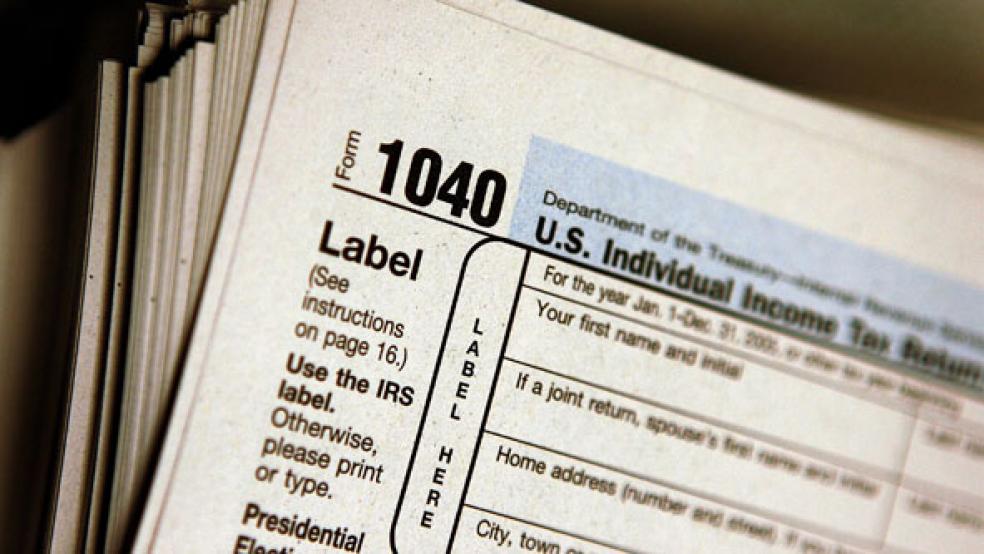
Over at Forbes, Tim Worstall didn’t take kindly to an op-ed I authored for The Fiscal Times pointing out that research by two economists, Peter Diamond and Emmanuel Saez, indicates that individual income tax rates are currently well below their revenue-maximizing rates. He accuses me of misrepresenting their work ... by completely misrepresenting their work, as well as mine. The crux of his ire with my “propaganda” is this paragraph in my piece:
“Most importantly, recent economic research has shown that productive economic activity is relatively unresponsive to increases in the top income tax rate, and the top income tax rate is well below the levels where it maximizes revenue. Economists Peter Diamond and Emmanuel Saez estimate that the revenue maximizing income tax rate is 73 percent (combing federal, state and local taxes).”
Worstall: “No, that is not what that paper says. What it does say is that in a tax system with no allowances then that peak of the Laffer Curve, that revenue [maximizing] rate, is 73 percent. What it also says is that the peak in a system with allowances is more like 54 percent.”
Nope, that’s totally wrong. What the paper says — it’s on page 7 — is that in today’s system the best estimate of the revenue-maximizing rate is 73 percent. Period.
A bit (or more than a bit) of wonkish explanatory background: The bottom-line number for assessing the impact of tax changes on revenue collected is the “elasticity of taxable income” (ETI), which simply measures the change in reported taxable income that accompanies changes in tax rates. The higher the elasticity (in absolute value), the more responsive taxable income is to tax rates. So, the higher the elasticity of taxable income (ETI) with respect to the net-of-marginal tax rate, the less revenue is raised in response to higher rates. Diamond and Saez:
“The key remaining empirical ingredient to implement the formula for the optimal tax rate is the elasticity e of top incomes with respect to the net-of-tax rate. With the Pareto parameter a=1.5, if e=.25, a mid-range estimate from the empirical literature, then τ*=1/1(1+1.5 x 0.25)=73 percent, substantially higher than the current 42.5 percent top marginal tax rate (combining all taxes).”
The mid-range elasticity they use comes from a 2012 paper by Joel Slemrod, Seth Giertz, and Saez (PDF) and is a midpoint elasticity based on empirical estimate based on the existing structure of the tax code, not a tax code without allowances. And as I note in my paper, Diamond’s and Saez’s preferred 0.25 ETI estimate is robust to historical and cross-country analyses.
It is true that this elasticity depends on how narrow or broad the tax base is (which is why tax reform should both broaden the base and increase the top rate). But hold that thought for a second. Worstall is wrong on which parameter belongs where.
He’s probably confused because Diamond and Saez illustratively note that a range of upper-income households’ elasticities before deductions (e=0.17) and after deductions (e=0.57) from a 2002 paper by Jonathan Gruber and Saez (PDF) implies a revenue-maximizing tax rate ranging between 80 percent with no allowances and 54 percent with allowances. Worstall seems to have cherry picked the lower bound and stopped reading there (he claims their 73 percent estimate is the upper-bound with “a tax system with no allowances,” omitting this illustrative 80 percent upper-bound with no allowances). But the 2012 review of the literature by Slemrod, Giertz, and Saez finds that, “While there are no truly convincing estimates of the long-run elasticity, the best available estimates range from 0.12 to 0.40,” and Diamond and Saez make clear that this new evidence and its midpoint ETI estimate yields a top rate with allowances of 73 percent.
As I discuss in my paper, the clear policy implication is that top rates can rise significantly even without any tax reform and still raise substantial revenue, and this revenue-maximizing rate just rises with a broader tax base. Worstall argues that the tax base is not going be wiped totally clean, but so what? The point stands that revenue-maximizing top rates are much higher than today’s top rates and will just rise as the tax base gets cleaner. For top earners, lots of this base-broadening to reduce tax avoidance can be accomplished with a handful of changes: eliminating the carried interest loophole, preferential rates on capital gains and dividends, the step-up basis for capital gains at death and the tax exclusion for municipal bond interest.
Worstall also seems to think he’s authored an exposé about my characterization that the “revenue maximizing income tax rate is 73 percent (combing federal, state and local taxes)” because “this is including all taxes on income.” Right, just like I said in the op-ed. Hence my op-ed (and the paper it’s based on) consistently distinguishes between a “revenue-maximizing total income tax rate,” and the “revenue-maximizing top effective federal income tax rate,” and top “statutory federal income tax” (the latter being the relevant takeaway for federal budget policy work). My estimate of a revenue-maximizing top statutory federal income tax rate of 66 percent takes into account surcharges and the effect of the personal exemption phaseout, as well as interactions with the average state and local taxes used by Diamond and Saez.
He ends by failing to understand that “after-tax” income trends in a source document I cite does indeed count the impact of the earned income tax credit (EITC).
All in all, Worstall seems to have skimmed the Diamond and Saez paper for enough time to see a couple of numbers, but he should have taken the time to actually understand it before he went flailing at my op-ed.





